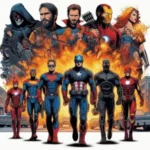In recent years, the silver screen has been dominated by caped crusaders and masked vigilantes, as a remarkable surge of superhero films has reshaped the cinematic landscape.
From the blockbuster triumphs of the Marvel Cinematic Universe to the darker narratives of DC’s offerings, these larger-than-life characters have woven themselves into the fabric of popular culture, transcending generations and genres. This blog post delves into the cultural impact of the superhero phenomenon, exploring how these films reflect societal values, address pressing issues, and shape collective identities. As we analyze the implications of this surge on the future of cinema, we’ll uncover what the continued popularity of superheroes means for storytelling, audience engagement, and the evolving dynamics of the film industry. Join us as we embark on an exploration of this captivating trend that not only entertains but also influences the way we perceive heroism in our ever-changing world.
1. Introduction: The Rise of the Superhero Genre
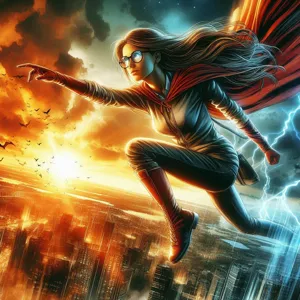
Over the past two decades, the superhero genre has surged to unprecedented heights, transforming not only the landscape of hollywood but also the very fabric of popular culture. What began as a niche market, primarily catering to comic book enthusiasts and dedicated fans, has blossomed into a global phenomenon that captivates audiences of all ages. The launch of the Marvel Cinematic Universe (MCU) in 2008 with “Iron Man” marked a pivotal moment in cinematic history, setting off a chain reaction that would see superheroes dominate the box office and become cultural icons.
This genre, characterized by its blend of fantastical narratives, larger-than-life characters, and high-octane action, has not only redefined entertainment but has also influenced fashion, language, and even social discourse. From catchphrases that have infiltrated everyday conversations to the rise of superhero-themed merchandise as a staple in retail, it’s evident that these characters have transcended their comic book roots. The allure of superheroes lies in their relatability, moral complexity, and the timeless battle between good and evil—a theme that resonates deeply with audiences navigating an increasingly chaotic world.
As we explore the cultural impact of the superhero surge, we must also consider the implications for cinema’s future. With studios investing billions in superhero films and franchises, the question arises: will this trend continue to dominate the box office, or will it eventually give way to new genres and storytelling methods? In the following sections, we will delve into the elements that have contributed to the superhero genre’s success, examine its cultural ramifications, and speculate on what the future holds for cinema in a world increasingly shaped by these heroic narratives. Buckle up, as we embark on a journey through the extraordinary rise of the superhero genre and its profound implications for the art of filmmaking.
2. A Brief History of Superheroes in Cinema
The journey of superheroes in cinema is a captivating tale that reflects not only the evolution of film but also the shifting tides of cultural values and societal concerns. The superhero genre as we know it began in earnest in the late 1930s with the release of the iconic “Superman” serial, which introduced audiences to the possibility of extraordinary beings who could transcend human limitations. This marked the dawn of a new cinematic era, where larger-than-life characters could leap off the comic book pages and onto the silver screen.
As the years progressed, the genre experienced ebbs and flows, with the golden age of superhero films arriving in the late 1970s, most notably with “Superman: The Movie” (1978), starring Christopher Reeve. This film not only set the standard for special effects and storytelling in the superhero realm but also laid the groundwork for future adaptations. The late ’80s and early ’90s saw a resurgence of interest with Tim Burton’s dark and stylized “Batman” (1989) and its sequels, which reflected a growing appetite for more complex narratives and character development within the genre.
However, it wasn’t until the early 2000s that superheroes truly began to dominate the cinematic landscape. The release of “X-Men” (2000) and “Spider-Man” (2002) heralded the modern era of superhero films, characterized by a blend of action, emotional depth, and relatable characters. These films not only appealed to comic book fans but also drew in wider audiences, solidifying superheroes as a staple of mainstream cinema.
The advent of the Marvel Cinematic Universe (MCU) in 2008 with “Iron Man” changed the game entirely, creating an interconnected web of stories and characters that encouraged viewers to immerse themselves fully in the superhero mythos. This unprecedented success paved the way for a slew of superhero films, from both Marvel and DC, leading to blockbuster hits that have shattered box office records and garnered critical acclaim.
Today, superheroes are more than mere entertainment; they embody our aspirations, fears, and the complex dynamics of contemporary society. As we explore the cultural impact of this genre, it becomes evident that superheroes have become a mirror reflecting our collective consciousness, capturing the zeitgeist of each era. The future of cinema is intricately woven with these iconic figures, making it imperative to understand their rich history to appreciate where they may lead us next.
3. The Cultural Phenomenon of Superhero Films
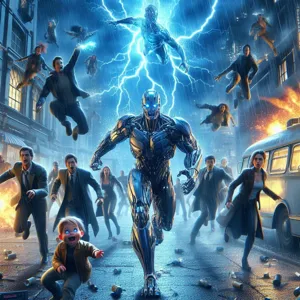
The Cultural Phenomenon of Superhero Films
Superhero films have transcended mere entertainment to become a defining cultural phenomenon of the 21st century. From the early days of Christopher Reeve’s Superman to the expansive Marvel Cinematic Universe (MCU) and the darker tones of the DC Extended Universe (DCEU), these films have woven themselves into the very fabric of modern pop culture. They are not just movies; they are communal experiences that inspire fervent fan engagement, discussions, and a sense of belonging.
At the heart of this phenomenon lies the universal appeal of the superhero archetype. These characters embody ideals of heroism, resilience, and justice—qualities that resonate deeply with audiences across diverse backgrounds. In times of uncertainty, they offer not only escapism but also hope, reflecting societal struggles and aspirations. For example, films like “Black Panther” and “Wonder Woman” have not only smashed box office records but also sparked meaningful conversations about representation, identity, and empowerment. These narratives celebrate diversity and challenge traditional norms, encouraging audiences to see themselves as part of the heroic journey.
Moreover, the community built around superhero films is immense. Fans gather at conventions, engage in online discussions, and create fan art or fiction, fostering a sense of camaraderie that extends beyond the cinema. This cultural engagement is further amplified by social media, where hashtags, memes, and viral trends keep the conversation alive long after the credits roll.
The success of superhero films has also influenced other genres, pushing them to explore complex themes and character development. This shift has encouraged filmmakers to experiment with storytelling techniques, intertwining humor, drama, and social commentary, all while delivering the high-octane action audiences crave. As a result, we see a broader acceptance of fantastical narratives that challenge conventional storytelling, paving the way for innovative cinematic experiences.
As we look to the future, the cultural impact of superhero films is poised to evolve even further. With a growing emphasis on inclusivity and diverse narratives, the next wave of superhero stories may reflect an even broader spectrum of human experience. This evolution not only speaks to the adaptability of the genre but also to its potential to shape cultural dialogues and inspire future generations of filmmakers and audiences alike. In a world increasingly defined by its complexities, superhero films remind us of the enduring power of hope, courage, and the belief that anyone can be a hero.
4. Key Factors Driving the Superhero Surge
The superhero surge in cinema is not just a fleeting trend; it represents a profound shift in cultural dynamics and audience preferences that has reshaped the film industry. Several key factors are driving this phenomenon and illuminating what lies ahead for cinema as a whole.
**1. **Escapism in Turbulent Times:** In an era marked by social upheaval, political unrest, and global challenges, audiences gravitate toward stories that offer escapism and hope. Superhero narratives often encapsulate the battle between good and evil, allowing viewers to momentarily step away from their realities and immerse themselves in fantastical worlds where justice prevails. This longing for heroism amidst chaos has fueled the popularity of superhero films, making them a comforting refuge for many.
**2. **Cinematic Universes and Franchise Power:** The establishment of expansive cinematic universes, such as the Marvel Cinematic Universe (MCU) and the DC Extended Universe (DCEU), has transformed how stories are told on the big screen. By interlinking characters and plotlines across multiple films, these franchises not only create deeper engagement but also cultivate a dedicated fanbase eager for each new installment. This interconnectedness encourages audiences to invest emotionally in characters and stories, fueling anticipation and driving box office success.
**3. **Diverse Representation and Expanded Narratives:** The superhero genre has increasingly recognized the importance of diversity, introducing characters that reflect a broader spectrum of backgrounds, cultures, and experiences. This expansion allows a more inclusive range of stories to be told, resonating with audiences who see themselves represented on screen. Films like “Black Panther” and “Shang-Chi and the Legend of the Ten Rings” have showcased the commercial viability of diverse storytelling, paving the way for future projects that continue to challenge traditional norms.
**4. **Innovations in Technology:** Advances in filmmaking technology have also played a significant role in the superhero surge. With improvements in CGI, motion capture, and special effects, filmmakers are now able to bring visually stunning and imaginative worlds to life that were once deemed impossible. This technological prowess not only enhances the storytelling experience but also captivates audiences, drawing them into a realm where the extraordinary feels tangible and real.
As we look to the future of cinema, the superhero surge serves as both a mirror reflecting our current cultural landscape and a lens through which we can explore new storytelling possibilities. The demand for superhero narratives is likely to evolve, but the lessons learned from this surge will undoubtedly shape the direction of filmmaking for years to come. Audiences will continue to seek out compelling stories that resonate on both personal and universal levels, ensuring that the legacy of superheroes—both on and off the screen—remains a defining element of contemporary cinema.
5. Representation and Diversity in Superhero Narratives
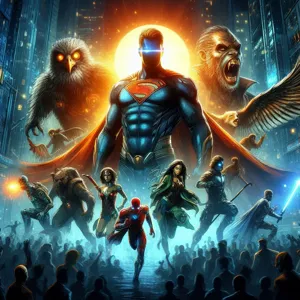
In recent years, the landscape of superhero narratives has undergone a transformative shift towards greater representation and diversity, reflecting the multifaceted tapestry of society. This evolution is not merely a trend; it signifies a profound cultural awakening that acknowledges the importance of diverse voices and experiences in storytelling. Historically, superhero films often centered around a limited set of archetypes, predominantly featuring white male protagonists. However, the tide has turned dramatically, as studios recognize the necessity and value of inclusive narratives that resonate with a broader audience.
Today, we see an array of superheroes emerging from various cultural backgrounds, gender identities, and social experiences. Films like “Black Panther” and “Wonder Woman” have not only shattered box office records but have also become cultural phenomenons that celebrate their respective heritages. By showcasing characters that reflect the diverse population of their audiences, these films provide a sense of belonging and empowerment, particularly for those who have often been marginalized in mainstream media. The success of these narratives has proven that audiences are hungry for stories that reflect their realities, aspirations, and struggles.
Moreover, the push for representation extends beyond just the heroes themselves; it encompasses the storytellers behind the camera as well. A growing number of filmmakers from underrepresented communities are stepping into the spotlight, infusing their unique perspectives and cultural insights into the narratives we see on screen. This shift not only enriches the storytelling but also encourages a more authentic portrayal of characters and situations, ultimately leading to a richer cinematic experience.
As we look towards the future, the implications of this cultural shift are significant. The demand for diverse superhero narratives is likely to influence the types of stories told and the characters developed in the years to come. With audiences increasingly advocating for representation, studios will feel compelled to prioritize inclusivity in their projects. This evolution is not just beneficial for storytelling; it’s essential for the growth of the superhero genre as a whole. By embracing diversity, filmmakers can create more compelling, relatable, and impactful narratives that resonate with a global audience, ensuring that the superhero surge continues to thrive in an ever-evolving cultural landscape.
6. The Success of the Marvel Cinematic Universe
The Marvel Cinematic Universe (MCU) has not just redefined the superhero genre; it has fundamentally altered the landscape of modern cinema. Since the release of “Iron Man” in 2008, the MCU has crafted an intricate web of interconnected stories, engaging characters, and high-stakes narratives that have captivated audiences worldwide. With each new installment, from the epic battles in “Avengers: Endgame” to the character-driven narratives of “Black Panther” and “Spider-Man: No Way Home,” Marvel has consistently pushed the boundaries of storytelling, visual effects, and audience engagement.
One of the key factors behind the MCU’s unprecedented success is its ability to create a shared universe that allows for crossovers and character development across multiple films. This innovative approach has generated a sense of anticipation and excitement, as fans eagerly speculate about future storylines and character arcs. The interconnected storytelling not only keeps audiences coming back for more but also fosters a community of passionate fans who discuss theories, share fan art, and celebrate their favorite heroes.
Moreover, Marvel’s commitment to diversity in its storytelling and character representation has resonated with a broader audience, making superheroes relatable to a wider demographic. Films like “Black Panther” and “Shang-Chi and the Legend of the Ten Rings” have not only achieved box office success but have also sparked important conversations about representation and cultural significance in the film industry.
As we look to the future, the impact of the MCU on cinema is profound. Its success has inspired countless studios to invest in franchise-building and cinematic universes, leading to a deluge of superhero films and television shows. While some critics argue that this trend may lead to oversaturation, the reality is that the MCU has set a high bar for storytelling, character development, and fan engagement. As the genre continues to evolve, it will be fascinating to see how filmmakers innovate and push the envelope, ensuring that the superhero surge remains a vital part of cinematic culture for years to come. The MCU’s legacy is not just in its box office numbers but in its transformative effect on how stories are told, shared, and experienced in the modern age.
7. The Role of Streaming Services in Shaping Superhero Content
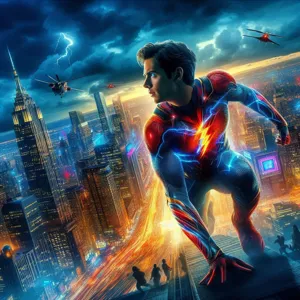
The rise of streaming services has dramatically reshaped the landscape of superhero content, ushering in a new era of storytelling that is both expansive and varied. Platforms like Netflix, Disney+, Amazon Prime Video, and HBO Max have not only become the new battlegrounds for superhero narratives but have also redefined how these stories are told and consumed.
Gone are the days when superhero films were predominantly confined to the silver screen. Today, streaming services offer a platform for nuanced storytelling that allows for deeper character development and intricate plotlines that feature more than just the traditional hero-villain dichotomy. Series like “WandaVision,” “The Falcon and the Winter Soldier,” and “Daredevil” exemplify how episodic formats enable creators to explore characters’ backgrounds and motivations in ways that a two-hour film often cannot. This evolution reflects a growing audience appetite for more intimate and complex portrayals of beloved characters, allowing for a richer viewing experience.
Moreover, streaming services have democratized access to superhero content. With a subscription model that often costs less than a single movie ticket, viewers can binge-watch entire seasons of superhero shows at their own pace, fostering a culture of discussion and fandom that is more vibrant than ever. This accessibility has also allowed lesser-known characters and stories to gain traction, broadening the superhero canon beyond the usual marquee names. As a result, audiences are introduced to diverse narratives that challenge traditional tropes and expand the genre’s horizons.
The flexibility of streaming platforms also allows for experimentation in storytelling. Creative risks can be taken with limited series, spin-offs, and even animated features, enabling creators to push boundaries and explore unconventional themes. This innovation is crucial in keeping superhero content fresh and engaging, as viewers increasingly seek narratives that resonate with contemporary issues, such as identity, justice, and morality.
In conclusion, the role of streaming services in shaping superhero content is profound, influencing not only how stories are told but also who gets to tell them. As we look to the future of cinema, it’s clear that the superhero genre will continue to evolve alongside these platforms, paving the way for a richer, more diverse cinematic universe that reflects the complexities of our world. The superhero surge is far from over, and with streaming services at the helm, the possibilities are endless.
8. Superheroes and Global Box Office Trends
The rise of superhero films has not only redefined the cinematic landscape but has also significantly influenced global box office trends. As audiences worldwide flock to theaters for these larger-than-life narratives, the data speaks volumes about their impact. In recent years, superhero movies have consistently dominated the box office charts, with franchises like the Marvel Cinematic Universe (MCU) and DC Extended Universe (DCEU) raking in billions of dollars collectively.
This surge in popularity can be attributed to several factors, including their universal appeal and the ability to transcend cultural boundaries. Characters like Spider-Man, Iron Man, and Wonder Woman resonate with diverse audiences, offering stories rooted in themes of heroism, resilience, and justice that are globally relatable. The spectacle of superhero films—packed with stunning visual effects, epic battles, and intricate storytelling—has also transformed the viewing experience, making it a thrilling event that draws in crowds.
Moreover, the globalization of cinema has played a pivotal role in this trend. With the advent of digital streaming platforms and improved access to international markets, superhero films have found eager audiences far beyond the borders of Hollywood. China, for instance, has become a significant player in the box office game, often ranking among the largest markets for superhero releases. This shift not only boosts revenue for studios but also encourages filmmakers to create content that appeals to diverse cultures, often resulting in local adaptations or collaborations that enrich the genre.
As we look to the future of cinema, the superhero genre will likely continue to shape box office trends. The appetite for sequels, spin-offs, and interconnected narratives shows no signs of waning. However, this dominance prompts important questions about the sustainability of the genre and the potential for emerging narratives to break through. In a world craving originality, studios may need to balance the superhero formula with fresh stories that challenge the status quo, ensuring that while heroes may continue to soar, the art of storytelling remains dynamic and diverse. The cultural impact of superheroes is profound, and their influence will undoubtedly resonate in the cinematic landscape for years to come.
9. The Impact on Traditional Filmmaking and Genres
The superhero surge has undeniably reshaped the landscape of modern cinema, leaving a lasting impact on traditional filmmaking and established genres. As the caped crusaders dominate the box office, filmmakers and studios are reevaluating storytelling techniques, production values, and audience expectations. This shift raises intriguing questions: What happens to the classic narratives and genres that once defined Hollywood?
For starters, the dominance of superhero films has led to a significant reallocation of resources within studios. Big-budget blockbusters featuring iconic characters are often prioritized over smaller, character-driven narratives. This has resulted in a scarcity of mid-budget films that once thrived in the industry. Independent filmmakers, who traditionally relied on unique storytelling and diverse genres, now face a more challenging environment as studios funnel their investments into franchise films with guaranteed box office returns.
Moreover, the superhero genre has influenced the aesthetics and techniques employed in filmmaking across the board. Elements like stunning visual effects, intricate world-building, and the inclusion of complex, serialized narratives have permeated other genres, from romantic comedies to horror films. The rise of interconnected universes, pioneered by franchises like the Marvel Cinematic Universe, has led to studios experimenting with shared universes in various genres, attempting to capture the same audience engagement and excitement.
This shift also affects genre conventions. Audiences now expect a certain level of spectacle and complexity, and as such, traditional genres are evolving to meet these new demands. For example, the fantasy genre has become infused with superhero elements, blending magic and superhuman abilities in a way that appeals to current tastes. Similarly, action films are now expected to incorporate elements of humor and emotional depth, mirroring the tonal balance that superhero films have perfected over the years.
Yet, this transformation is not without its challenges. As traditional genres adapt to the superhero model, there is a growing concern that originality may suffer. Audiences might become fatigued by formulaic storytelling and predictable plots, leading to a backlash against the very genre that has captivated them. Filmmakers will need to strike a delicate balance between innovation and the tried-and-true methods that have historically resonated with viewers.
In conclusion, the superhero surge has profoundly impacted traditional filmmaking and genres, prompting both challenges and opportunities for the future of cinema. As filmmakers navigate this evolving landscape, the industry must find a way to honor its roots while embracing new storytelling possibilities that resonate with today’s diverse audience. The future of cinema may hinge on this delicate balance, ensuring that while superheroes may reign supreme, there remains room for the rich tapestry of stories that have always defined the art of filmmaking.
10. Audience Expectations: The Demand for Franchise and Continuity
In the age of superhero cinema, audience expectations have transformed dramatically, creating a landscape where franchise and continuity reign supreme. Gone are the days when a single film stood alone; today, viewers crave interconnected narratives that weave through multiple films and series, creating a rich tapestry of storytelling that deepens their engagement. This phenomenon is largely driven by the intricate world-building and character development that franchises like the Marvel Cinematic Universe (MCU) and the DC Extended Universe (DCEU) have successfully executed.
The demand for continuity is no longer just a niche preference; it’s a mainstream expectation. Audiences have become accustomed to following their favorite characters across various arcs, exploring their journeys in different contexts, and witnessing how their actions ripple through an expansive universe. This interconnectedness not only enhances the viewing experience but also fosters a sense of community among fans, who eagerly dissect every Easter egg and speculate on future plot developments.
As a result, filmmakers and studios are increasingly focused on creating expansive universes, leading to a strategy where sequels, spin-offs, and crossovers are not merely options but essential components of a successful cinematic franchise. This approach has led to a saturated market where audiences are both thrilled and fatigued by the sheer volume of superhero content. The challenge for creators now lies in balancing the expectations for continuity with the need for originality and innovation within their stories.
Additionally, this demand for franchise continuity has significant implications for cinema’s future. It raises questions about the sustainability of such models and the potential risk of homogenization in storytelling. While audiences may revel in familiar characters and settings, there is an undeniable need for fresh narratives and diverse voices to emerge. As the superhero genre continues to dominate the box office, filmmakers must find creative ways to expand beyond the established formulas to keep audiences engaged and excited.
In summary, audience expectations for franchise and continuity have reshaped the cinematic landscape, driving studios to prioritize interconnected narratives. As we look ahead, the challenge will be to maintain this momentum while ensuring that cinema continues to evolve, embracing innovation and creativity in storytelling. The future of film may very well depend on finding that delicate balance between the familiar and the new, ensuring that superhero tales remain not just popular but also meaningful and impactful.
11. The Future of Superhero Stories: Innovation vs. Saturation
As we stand at the crossroads of the superhero genre, the debate surrounding its future intensifies: will we witness a wave of innovative storytelling, or will we succumb to the fatigue of oversaturation? Over the past two decades, the superhero film landscape has exploded, reshaping the very fabric of modern cinema. From the groundbreaking narratives of the early 2000s to the sprawling cinematic universes of today, audiences have been treated to a diverse array of characters and tales that have transcended the traditional boundaries of the genre. However, as box office revenues soar and franchises proliferate, questions arise about the sustainability of this phenomenon.
On one hand, the superhero genre has proven remarkably adaptable. Filmmakers are increasingly experimenting with new styles and themes, breathing life into the medium through innovations that challenge conventional tropes. Recent offerings like *Spider-Man: Into the Spider-Verse* showcased a unique animation style and a layered narrative that appealed to audiences of all ages, while films like *Black Panther* and *Wonder Woman* introduced cultural nuances and perspectives previously underrepresented in mainstream cinema. These examples highlight the potential for superhero stories to evolve beyond their origins, allowing for a richer, more varied tapestry of narratives.
Conversely, there is a palpable concern regarding the saturation of the market. With countless sequels, spin-offs, and reboots flooding theaters and streaming platforms, audiences may begin to grow weary of familiar formulas. The challenge lies in maintaining viewer engagement while balancing the demands of franchise-building with fresh, original storytelling. If studios fail to innovate, they risk alienating fans and diluting the very essence that made these stories compelling in the first place.
As we look ahead, the future of superhero stories will likely hinge on the industry’s ability to strike a delicate balance between innovation and saturation. Filmmakers must remain bold, willing to take risks and challenge audience expectations. This could mean embracing niche narratives that explore the depths of character development or experimenting with genre-blending approaches, as seen in the likes of *The Suicide Squad* with its dark humor and unorthodox character arcs.
Ultimately, the fate of superhero cinema will depend on its creators’ willingness to transcend the genre’s limits, ensuring that each new installment brings something fresh to the table. By fostering a culture of creativity and innovation, the superhero genre can continue to captivate audiences, securing its place in the cinematic landscape for years to come. As we ponder what lies ahead, one thing is clear: the future of superhero stories is not just about saving the world—it’s about telling stories that resonate, inspire, and invite us to reflect on our own lives.
12. Exploring Ethical Themes in Superhero Narratives
In the realm of superhero films, ethical themes have increasingly taken center stage, elevating the genre beyond mere spectacle to thought-provoking commentary on society. As audiences clamor for more than just thrilling fight sequences and stunning visual effects, filmmakers have begun to weave complex moral dilemmas into their narratives, reflecting the real-world challenges we face today.
Take, for instance, the character of Spider-Man, whose mantra, “With great power comes great responsibility,” encapsulates the essence of ethical decision-making. This phrase resonates deeply in a world grappling with issues of power dynamics and social justice, prompting viewers to reflect on their own responsibilities within their communities. Films like *Black Panther* have further expanded this exploration, delving into themes of colonialism, identity, and the ethical implications of technology and power, all while promoting narratives of empowerment and representation.
Moreover, the recent wave of superhero movies has not shied away from darker themes, grappling with the consequences of vigilantism and the moral ambiguities of heroes and villains alike. Characters like the anti-hero Deadpool challenge traditional notions of heroism, forcing audiences to confront their perceptions of right and wrong. This complexity invites viewers to engage in deeper discussions about morality, ethics, and the gray areas that exist in our own lives.
As superhero narratives continue to evolve, they not only entertain but also serve as a mirror reflecting the ethical dilemmas of contemporary society. This trend suggests a promising future for cinema, one where storytelling transcends escapism, encouraging audiences to ponder profound questions about justice, equity, and the human experience. In embracing these ethical themes, superhero films can inspire a new generation of thinkers and advocates, solidifying their place not just as entertainment, but as a significant cultural force with the power to drive change.
13. The Role of Superheroes in Pop Culture and Society
The role of superheroes in pop culture and society has transformed dramatically over the decades, evolving from simple comic book characters to complex figures that resonate deeply with audiences around the globe. At their core, superheroes embody our highest ideals and aspirations—courage, justice, and the relentless pursuit of good. They serve as modern-day myths, reflecting our societal values, fears, and hopes, while offering a lens through which we can explore the human condition.
In recent years, the surge of superhero films and series has infiltrated every corner of popular culture, influencing everything from fashion trends to political discourse. Characters like Spider-Man, Wonder Woman, and Black Panther have become household names, transcending their fictional universes to become symbols of empowerment and resilience. The rise of diverse representation in superhero narratives has also played a pivotal role, as audiences seek characters that mirror their own identities and experiences. For instance, films like “Black Panther” not only broke box office records but also sparked conversations about race, identity, and cultural pride, creating a cultural phenomenon that resonates far beyond the silver screen.
In addition to entertainment, superheroes often act as catalysts for social change. They encourage discussions about ethics, morality, and the consequences of power, prompting viewers to reflect on their own roles within society. As we navigate complex global challenges—climate change, inequality, and political unrest—superheroes provide both an escape and a framework for understanding the struggles we face, reminding us that every individual has the potential to make a difference.
As we look to the future of cinema, it’s evident that superheroes will continue to shape the landscape of storytelling. Their ability to adapt, evolve, and resonate with audiences ensures they will remain relevant in a rapidly changing world. Whether through new narratives that push boundaries or innovative formats that engage audiences in fresh ways, the superhero genre is poised to remain at the forefront of pop culture, inspiring the next generation of filmmakers and fans alike. The question is no longer if superheroes will influence cinema’s future, but rather how they will continue to redefine what it means to be a hero in our ever-evolving society.
14. Predictions for the Next Decade of Superhero Cinema
As we look ahead to the next decade of superhero cinema, the landscape promises to be as dynamic and unpredictable as the heroes themselves. With the immense success of franchises like the Marvel Cinematic Universe and DC Extended Universe, it’s clear that superhero films are here to stay. However, the question remains: how will they evolve?
One major prediction is the continued diversification of storytelling. Audiences are increasingly craving narratives that reflect a broader spectrum of experiences and identities. This shift has already begun, with films like “Black Panther” and “Shang-Chi and the Legend of the Ten Rings” breaking box office records while showcasing rich cultural backgrounds and complex characters. Expect to see more films that explore lesser-known heroes and underrepresented voices, paving the way for a richer cinematic tapestry.
Moreover, as streaming platforms gain dominance, superhero narratives will likely expand beyond traditional formats. Mini-series and serialized storytelling are becoming popular, allowing for deeper character development and intricate plots. The success of Marvel’s Disney+ series like “WandaVision” and “Loki” has demonstrated that audiences are hungry for content that explores the nuances and intricacies of their favorite characters outside of the blockbuster format.
We may also witness the rise of more experimental storytelling techniques. With filmmakers eager to push boundaries, we can anticipate a blend of genres that intertwine superhero elements with other cinematic styles. Imagine a gritty, noir-inspired superhero thriller or a heartfelt, coming-of-age story set against a backdrop of superhuman abilities. This cross-pollination could breathe fresh life into the genre and attract new audiences.
In addition, environmental and social themes are likely to play a larger role in future superhero narratives. As global awareness of climate change and social justice grows, we can expect heroes who tackle these pressing issues head-on. This trend could lead to powerful stories that not only entertain but also inspire action and reflection within viewers.
Finally, the next decade may see the return of the superhero film as a cultural phenomenon that transcends the cinema. Expect to see immersive experiences, such as interactive films and virtual reality escapades that allow fans to step into the shoes of their favorite heroes. As technology advances, the possibilities for audience engagement are limitless.
In summary, the future of superhero cinema is poised for transformation. With a focus on diversity, innovative storytelling formats, thematic depth, and technological integration, the next decade will likely redefine what it means to be a superhero on screen. Audiences can look forward to a thrilling ride—one that not only entertains but also challenges and inspires.
15. Conclusion: The Lasting Legacy of the Superhero Surge
As we draw the curtain on our exploration of the superhero surge, it’s clear that this phenomenon has left an indelible mark on the landscape of cinema and popular culture. The past two decades have witnessed a remarkable evolution, where caped crusaders and formidable heroines have transitioned from the pages of comic books to become cultural icons that resonate deeply with audiences across the globe.
The superhero genre has not only redefined box office expectations but has also reshaped narrative storytelling in cinema. Characters like Spider-Man, Black Panther, and Wonder Woman have transcended their fictional worlds to become symbols of resilience, diversity, and hope, reflecting the complexities of the societal issues we face today. This cultural impact has sparked conversations around representation, morality, and the human condition, solidifying the genre’s relevance and importance in modern storytelling.
Looking ahead, the legacy of the superhero surge suggests a promising yet challenging future for cinema. As studios continue to invest in expansive universes and intricate storylines, they must also navigate the delicate balance of innovation and audience fatigue. The key will lie in the ability to evolve, allowing for fresh narratives and unique character arcs that captivate and engage viewers without relying solely on established formulas.
In conclusion, the superhero surge has not only transformed the cinematic landscape but has also established a new standard for storytelling, character development, and audience engagement. As we venture into uncharted cinematic territory, the lessons learned from this remarkable era will undoubtedly influence the next wave of filmmakers and storytellers. The superhero genre has proven that with great power comes great responsibility, and it is this responsibility—to entertain, inspire, and reflect the world around us—that will shape the future of cinema for generations to come.
As we conclude our exploration of “The Superhero Surge,” it’s clear that this phenomenon has reshaped not only the landscape of cinema but also the broader cultural narrative. The rise of superhero films has sparked conversations about identity, morality, and societal values, reflecting our collective hopes and fears in a rapidly changing world. As filmmakers continue to innovate within this genre, we can anticipate new storytelling techniques and diverse representations that will further enrich the cinematic experience. The superhero genre has proven its staying power, and its influence will undoubtedly steer the future of cinema in exciting and unexpected directions. We invite you to share your thoughts on this cultural shift—how do you see the superhero surge impacting the films you love, and what stories do you hope to see next? The dialogue around this topic is just beginning, and we can’t wait to hear from you!

